technology transfer & commercialization
Technologies from Private/Governmental R&BD Institutions
TTA01 Intelligent Robotics Technology
Autonomous Driving Vehicle without a Driver's Seat, Discovering a New Value for Transportation
Level 4 Autonomous Driving
Researchers succeeded in developing an autonomous driving vehicle without a steering wheel by mounting a high-performance AI SW onto an electric vehicle model by an SME. The passenger can engage in any activity inside the vehicle since driving is not necessary.
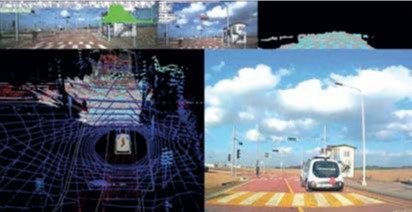
Commercial autonomous driving technologies available now are at level 2 or 3, which still have the driver's seat and drivers need to intervene as necessary. On the contrary, Researchers developed a technology that makes vehicles without the driver's seat fully prepared for the era of level 4 autonomous driving.
TTA02 Walking Assistance Technology for the Elderly
Improving Elderly People's Quality of Life through ICT
FES (Functional Electrical Stimulation) Technology
Researchers have recently developed a walking assistance technology that allows users to move their joints through functional electrical stimulation (FES).
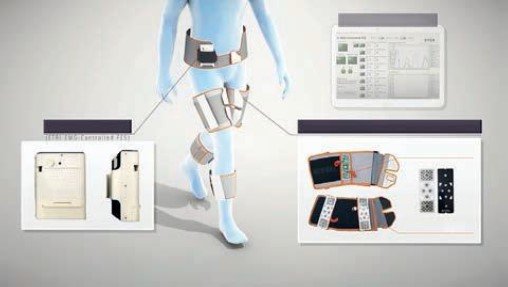
Electrodes-consisted patches are attached to the desired muscle points, and the system will determine the users' intentions and how much they want to move their joints. It will then naturally and electrically help their muscles generate the desired comfort.
TTA03 Technologies Specialized in Robots That Help the Elderly
Actualizing Home Service Robots with Dataset Specialized for the Elderly
Open Source Data and Core Technologies to Train Robots for Human-Robot Interactions
It was hard to study robots for elders because practically no data were available.
A high-quality 3D image dataset obtained with great efforts by the researchers will be provided to companies, schools, and laboratories for research purposes.
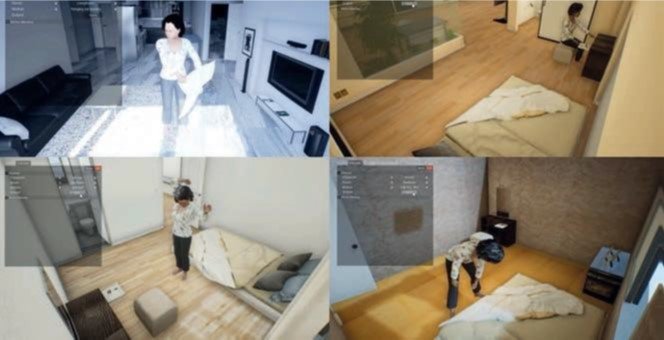
Also, open-source data and core technologies will be provided to train robots for human-robot interactions. Primary technologies developed by researchers so far include 13 AI robot technologies that *recognize the everyday behavior of elders, *their appearance (facial features and clothing styles), *belongings, *robots that automatically create interactions with elders, *voice recognition specialized for elders, etc.
The researchers plan to develop robotic technologies that support the elderly and socially disadvantaged people's everyday activities, including organizing, cleaning, cooking, and running errands.
TTA04 Realistic VR Technology
Realistic Firefighting Training Realized Safely with VR
Realistic Firefighting Training Simulator
Researchers have recently created a realistic simulator using VR that allows firefighting training that utilizes actual firefighting tools in virtual reality.
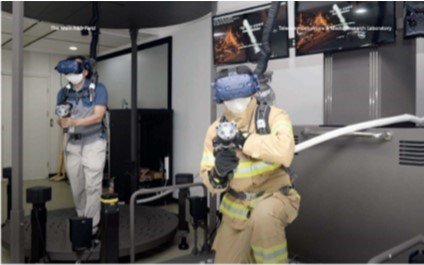
This simulator is a composition of state-of-the-art VR technology featuring things such as motion simulator technology that allows safe immersion experiences, multi-sensory interface technology that support realistic fire situations, and training content developed with the help of firefighters.
Researchers will implement heat and cooling sensation devices on firefighters' breathing devices and uniforms and enhance the technology to monitor the trainees' vital signs to create a more realistic and practical training environment.
TTA05 Celluar IoT Technology
Smart Factories Using Core 5G and Ultra-Low Latency Network Technologies
Industrial loT based on the 5G standard (Rel-15) for Smart Factories
Smart factories aim to provide various customized products in real time. Thus, the workers should be able to change process sequences and functions using panels and controllers, and the mobile robots must be able to link production facilities or make a product according to the changed processes.
Researchers demonstrated
- real-time control of mobile robots
- monitoring and control of production facilities using a portable control panel
- monitoring of processes using portable VR devices like HMD
- wireless communication among PLCs required for the flexible change of production lines.
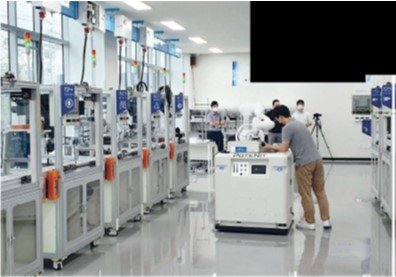
Researchers plan to demonstrate a real-time control and management service of facilities from a remote site through the 5G wired and wireless networks that can guarantee low latency of within 1/100 seconds(one-way) and high reliability.
And also, they are to prove the possibility of remote overseas management and control through the intercontinental connection of a high-performance network.
TTA06 Satellite Communication Tech.
Overcoming the Limits of Communication with Satellites
ASIC Technology
Researchers reduced the size and significantly reduced the cost of manufacturing the device by combining two critical functions needed to use the network satellite communication into one, the radio wave transmission and the reception function in the terminal equipment.
ASICs exceed those of the world's best products that are currently commercialized. It improved not only the satellite communication technology but also its usability.
ASIC technology will be used for emergency responses at domestic disaster sites. The terminal equipment implemented with ASIC is light and developed so firefighters and ordinary people can use it easily. (The existing satellite communication equipment is heavy and complicated, requiring an SNG vehicle.)
TTA07 Non-Contact Sensors with 660 Times High Sensitivity
Emerging Power of the Touchless Market with Non-Contact Sensors
Honeycomb-shaped MoS2 Structure
Non-contact or touchless sensors detect position, speed, temperature, air quality, or distance using a non-contact measurement method. Merits of these sensors include high reliability, fast operating speed, and long service life because it does not require any physical contact during their operation.
Researchers in Korea recently developed a non-contact sensor that can detect humidity at a distance of about 1 cm without direct contact. This sensor's sensitivity is 660 times higher than existing sensors with a detection time of 0.5 seconds, up to 12 times faster than existing commercial sensors that take five to six seconds, and can significantly help prevent contagious diseases in the COVID-19 era.

This new sensor uses a new material called molybdenum disulfide (MoS2) and can detect moisture like sweat on the skin and breathing at high sensitivity. The researchers could drastically improve the sensitivity of this sensor by creating a honeycomb structure and coating it with molybdenum disulfide. This is because the honeycomb structure of sensor materials can improve sensitivity by broadening the specific surface area for detecting moisture and vapor.
Researchers expect sensor technologies that can sense external information in real-time to improve public health and sanitation while adding convenience to everyday life.
TTA08 Simultaneous Transfer and Bonding (SITRAB) Tech.
Connecting High-Quality Content with Micro LED Display
SITRAB Technology for Micro LED Display significantly reduces investment, material, and process repairing costs.
There are diverse display technologies in 4K and 8K resolutions, such as mini LED, OLED, and micro LED. Micro LED has the best definition, color reproduction, and dynamic range. It is expected to apply to devices such as TV, smartwatches, and AR/VR displays, but it is too expensive to commercialize.

The conventional manufacturing system followed the LED bonding process after the LED transfer process. There was difficulty commercializing micro LED because of the expensive transfer and bonding machines and lengthy processing time.
Under this circumstance, a Korean research group has developed new technologies and materials for micro LEDs that realize the transfer and bonding processes, which were sequential processes, into one process.
Compared with conventional technologies, the new technology developed can reduce the processing time and investment cost for transfer and bonding equipment to 1/10, and the time and cost of the process to repair defective pixels can be reduced to 1/100. The cost of new materials is also reduced to 1/100.